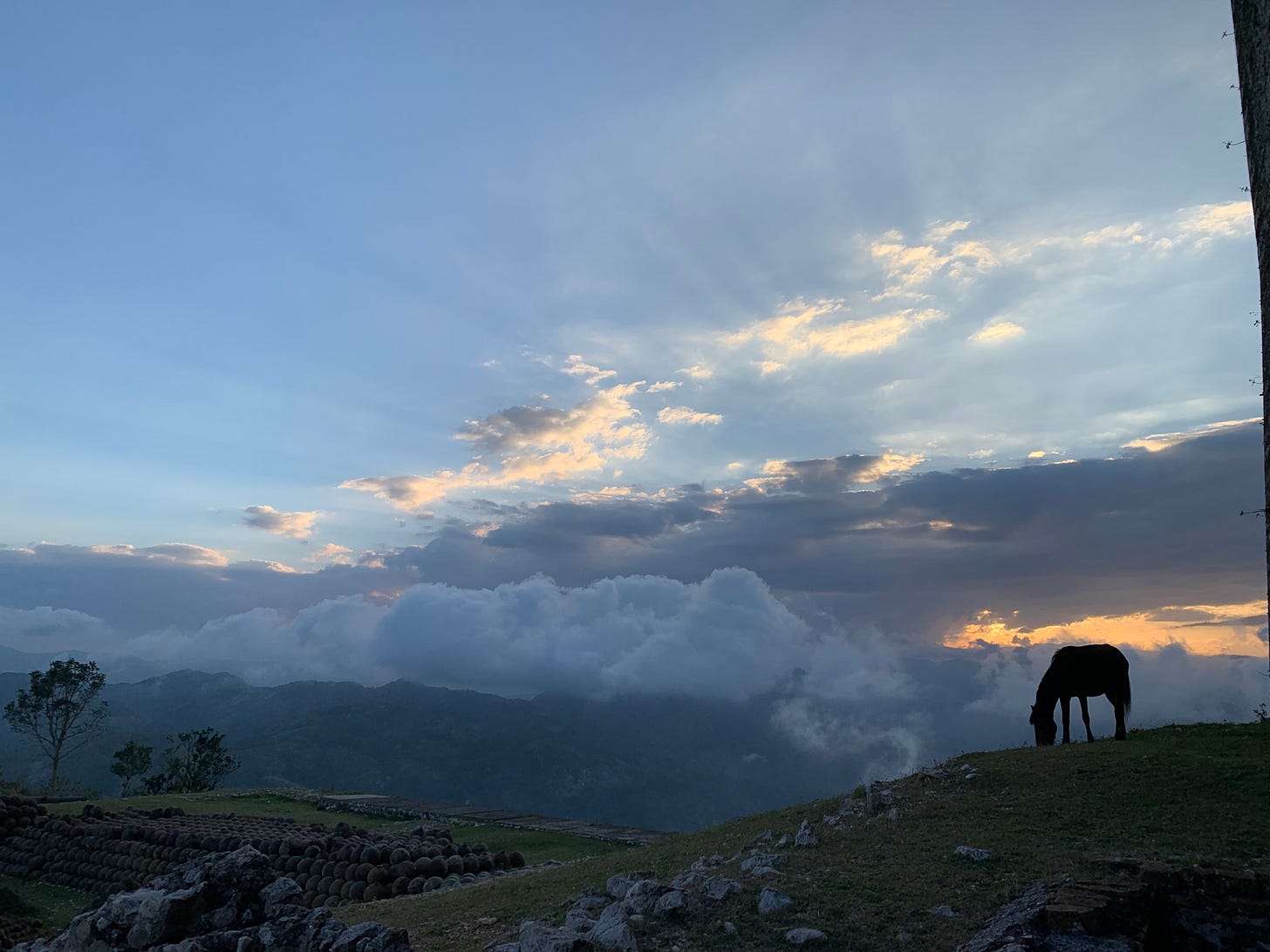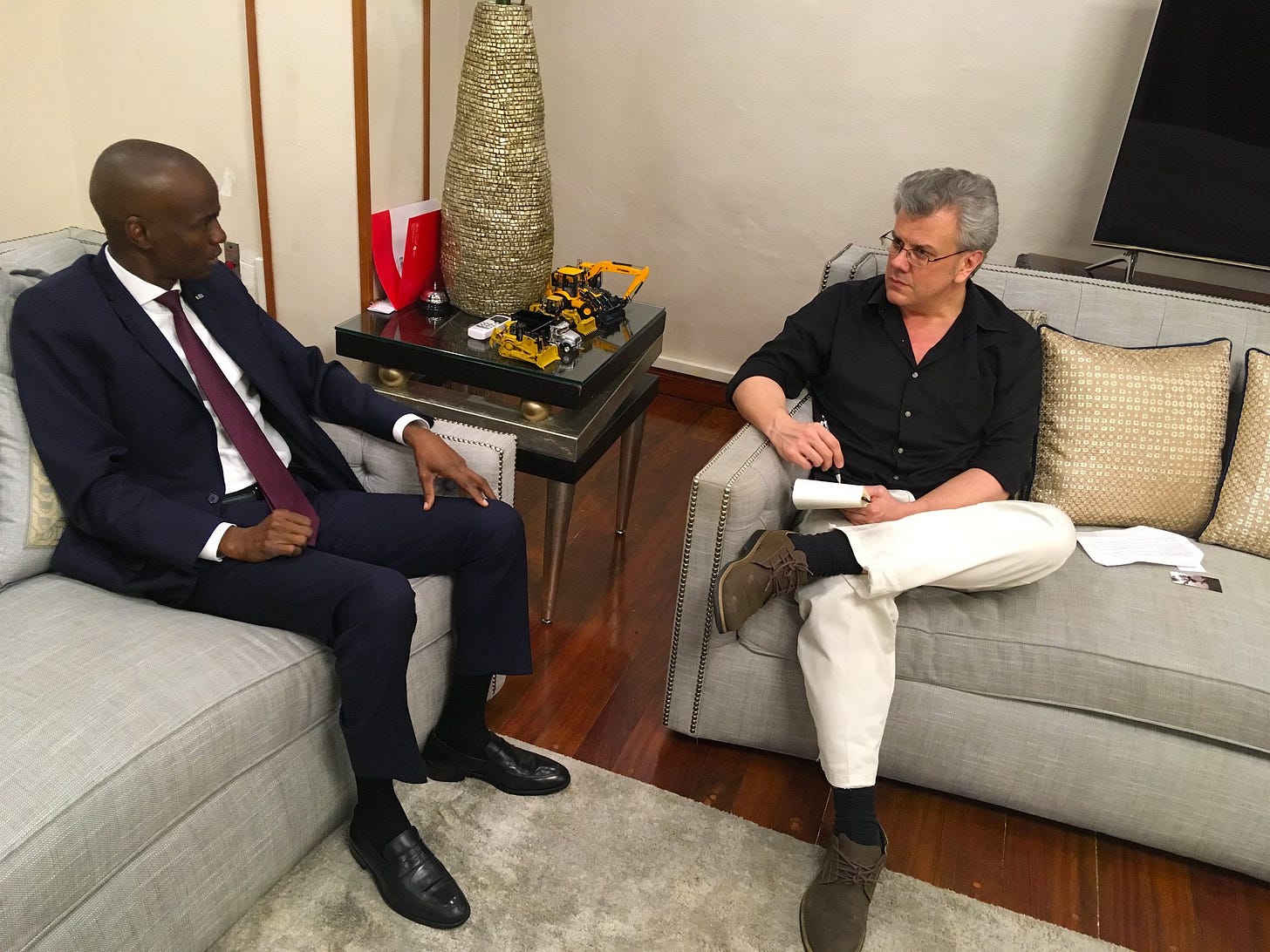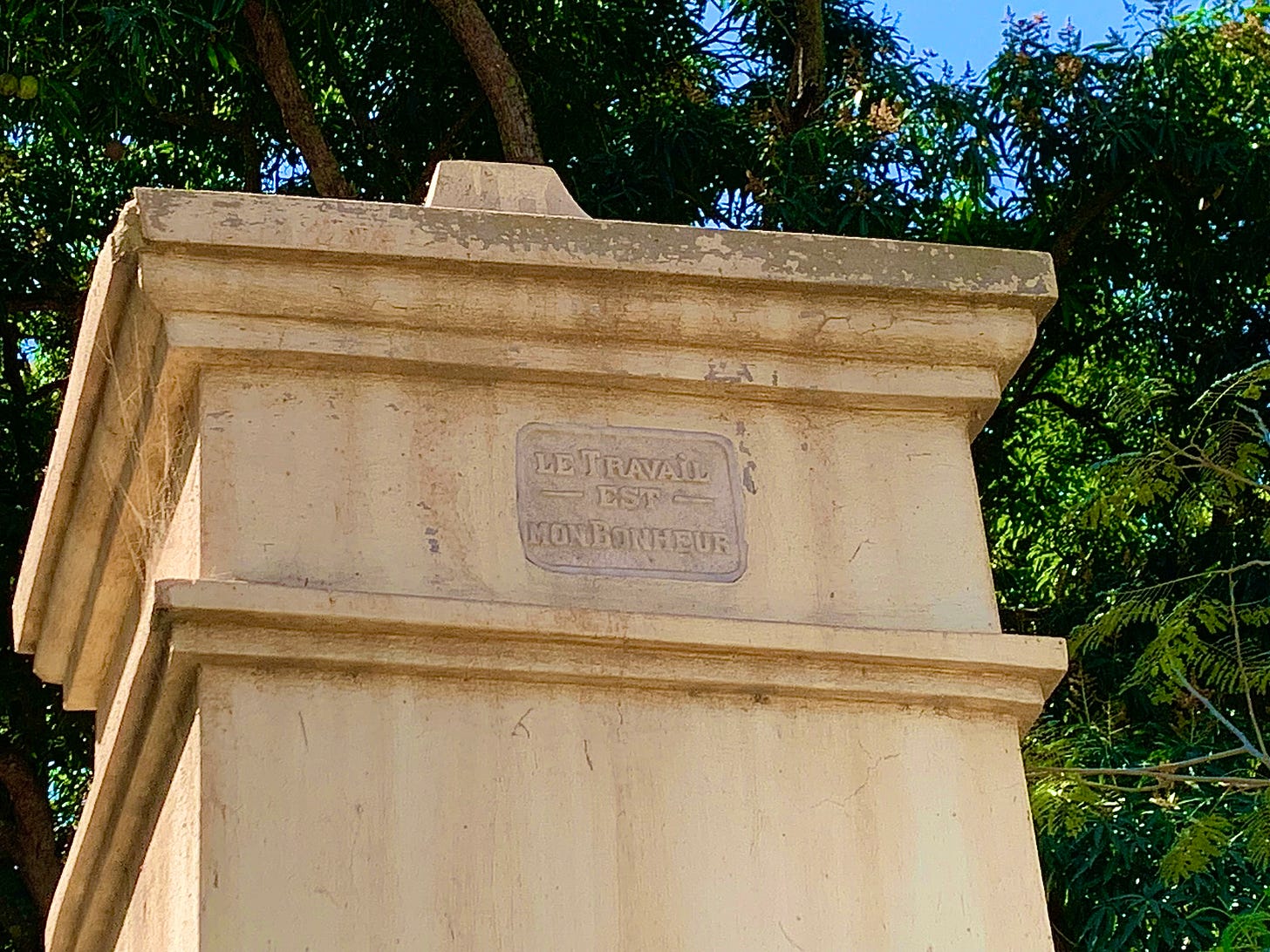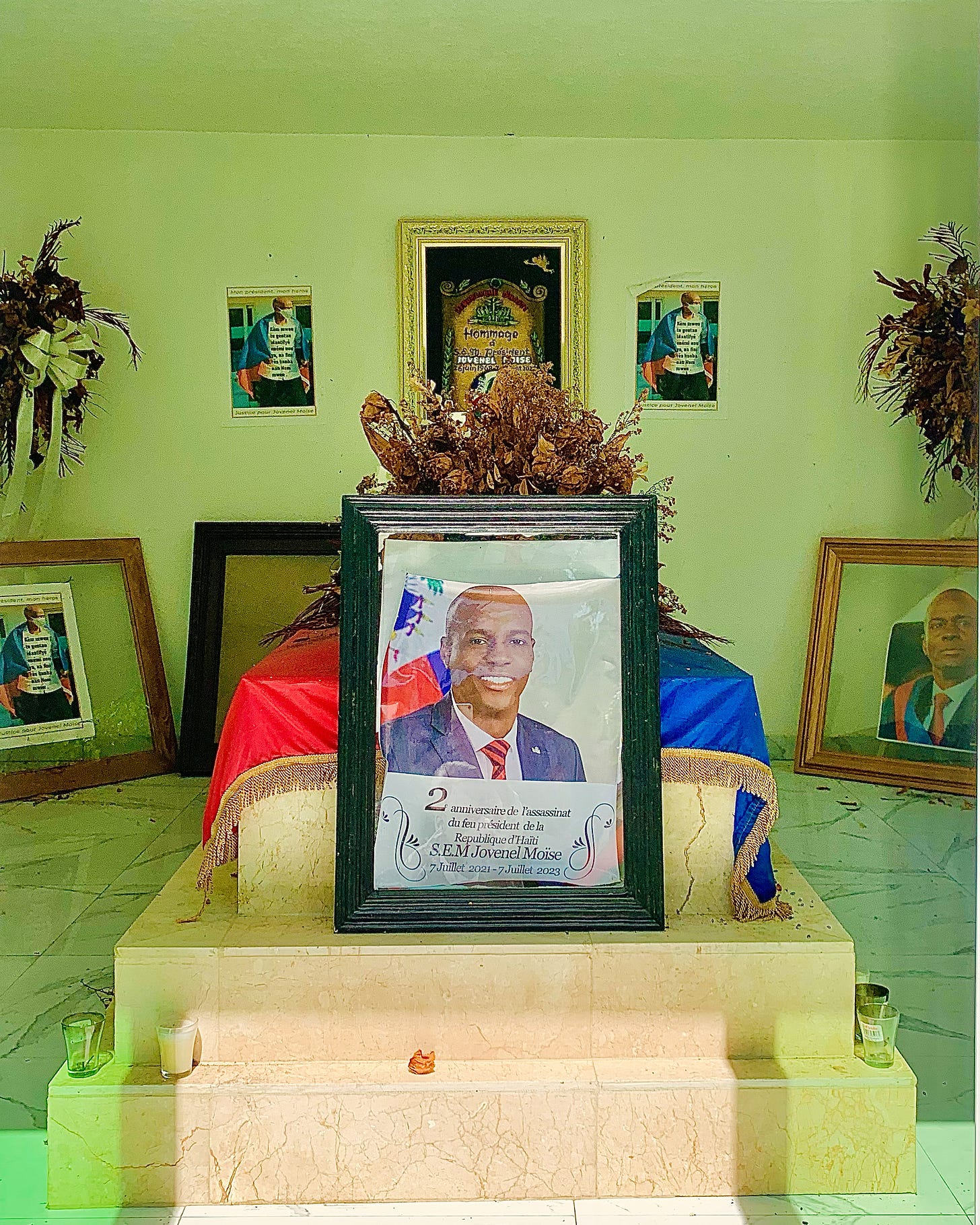In late afternoon, the Citadelle Laferrière gazes defiantly across Haiti’s northern plains, the heights of its ramparts wreathed in clouds as flashes of fiery red and orange burst through from the setting sun.
Built outside of the northern city of Cap-Haïtien as an impenetrable mountain fortress by Henry Christophe, one of the leaders of Haiti’s successful rebellion against the French (he would later become King Henry I of the Kingdom of Haiti), the Citadelle’s task was to ward off a feared subsequent French re-invasion that never came. It has been a symbol of Haiti’s independence ever since. With its cannons still seemingly at the ready to defend the nation and birds soaring across the surrounding valleys to rest on its walls, at this hour of day the impression is one of great silence and watchfulness, as the drama of Haitian politics plays out in far-off Port-au-Prince, the capital, around 120 miles to the south.

But Haiti - the original Arawak name for the island the nation shares with the Dominican Republic, re-adopted by its first independent leader, Jean-Jacques Dessalines, after the rebels vanquished the French in what-was-then the of Saint-Domingue - has had precious little quiet to enjoy in its 220 year history.
Though its most recent chapter of upheaval began with the July 2021 assassination of President Jovenel Moïse (himself a son of the north, born in nearby Trou-du-Nord), from virtually its inception Haiti has been riven with divisions: Black against mulatto, city against countryside, north against south, the nation as a whole against the predatory politicians concentrated in its capital (not-infrequently referred to derisively as “the Republic of Port-au-Prince”).
It has also had to contend with the machinations of an outside world seemingly designed to destroy it. There was the extortionate “debt” that Haiti was forced at gunpoint to pay France for its impertinence in defeating the empire’s troops and abolishing slavery (the circumstances of which are well-docmented in the recent book Les chaînes de la dette). There was the consistent meddling in Haitian affairs by successive U.S. governments throughout the 19th century, supporting various Haitian political factors against others (much of this is covered in my forthcoming book) and culminating in a 1915 U.S. invasion and 19-year occupation. There was the destruction of the Creole pig in the early 1980s in a U.S.-Canadian programme to eliminate African Swine Fever, and there was the slashing of tariffs on imported rice in the 1990s that saw Haiti flooded with low-cost rice from the U.S. that undercut the ability of Haitian farmers to compete, leading to waves of internal migrants to cities, especially Port-au-Prince, that were ill-equipped to handle them.
From time to time in its history, rebel armies would sweep down through the country’s north, their leaders often meeting a bad fate once they assumed power in the south. Dessalines himself was assassinated near what is today the slum of La Saline in the capital in October 1806. The mercurial mulatto leader Sylvain Salnave (described by the Haitian author and politician Frédéric Marcelin as possessing “the wild and masculine beauty of a bold gaucho”) was executed in front of the smoking ruins of the National Palace he had once occupied in 1870. Cincinnatus Leconte was inside a reconstructed National Palace when it exploded in 1912. And in 1915, Vilbrun Guillaume Sam was killed by a mob that had finally had its fill of his crimes, precipitating the U.S. invasion and occupation.
To this melancholy litany was added the name of Jovenel Moïse. Tall, lanky, complex, flawed, authoritarian and stubborn, I interviewed him twice, at length, in Haitian Creole, and found his recall of facts, figures and the minutiae of various government projects and programmes startling. He would speak about his desire to pave Haiti’s collapsing roads and bring electricity to its far-flung and long-neglected communes and lash out at what he charged was the holding hostage of the state by a corrupt oligarchy from whom he said he had to free it. That Moïse was black and from the north, and that many of his most bitter opponents came from Haiti’s mulatto oligarchy or traditional political class in the capital, made more than a whiff of, if not exactly racism, then classist and regional snobbery present in the denunciations of him. Who was this hick trying to lecture them about how things worked in a world of people who count?

Moïse himself carried some baggage. He was elected president as the candidate for the Parti Haïtien Tèt Kale (PHTK), a political entity formed by former president Michel Martelly. and which has since become synonymous with violence and corruption. Early in his tenure, a report from Haiti’s Court of Auditors claimed that firms linked to Moïse when he was a private citizen took part in an embezzlement scheme connected to Haiti’s participation in the Venezuelan low-cost oil program, Petrocaribe. The use of street gangs as political enforcers, a practice that was pioneered by the 2001 to 2004 government of Jean-Berrtand Aristide and his Fanmi Lavalas party, has, in ensuing years, spread throughout Haiti’s body politic and PHTK was an enthusiastic adherent to the practice.
In the nearly three years since Moïse’s killing, though, Haiti’s crisis has taken on new and frightening dimensions. Most of Port-au-Prince and its environs are now under the control of thousands of heavily-armed gang members, with travel through the northern, southern and eastern approaches to the city an option only for the desperate or foolhardy. An unelected Prime Minister, Ariel Henry, who has no constitutional authority to occupy the position he holds and who has repeatedly been linked to some of those alleged to have been involved in Moïse’s killing, has presided over a virtual collapse of the state, with local human rights organizations accusing his government of supplying some of the gangs with weapons and ammunition.
The investigations into the president’s murder has served to obscure, rather than clarify, the root causes of his death. Several secondary figures have been handed long prison sentences in the United States for their involvement in the crime, while the upper echelon financial and intellectual sponsors of it remain unnamed. In Haiti itself, a separate inquiry has been chaotic, running through four judges - some of whom only spent days on the case before resigning amid threats, office break-ins and accusations of corruption - before settling on a fifth, whose recent report claimed that Moïse was not killed by his rivals in the political and economic realm but due to a conspiracy between his wife (now widow), Martine, and Ariel Henry’s predecessor as Prime Minister, Claude Joseph (a political rival of Henry). Haitian human rights organizations have been extremely critical of what they viewed as the differential treatment given to Henry in the production of the report, and virtually everyone I spoke to in Haiti viewed its contents with deep skepticism.
But history is never far away in Haiti, and in the north it is more present than in many places. The region is dotted with vodou pilgrimage sites - Lovala, Limonade, Plaine du Nord - where adherents of Haiti’s compelling syncretic religion blending elements of African beliefs and Catholicism return every year to pay homage to the various lwa, or spirits. The ruins of colonial-era structures rear up unexpectedly at country crossroads as if refusing to be forgotten. Just east of Cap-Haïtien (often referred to as Au Cap) in the Quartier Morin, for example, on the gate that still remains from what was once the Habitation Detreille, a sugar plantation, a cruel sense of humor is on display with the affirmation Le travail est mon bonheur (Work is my happiness) that is still visible etched there.

In Cap-Haïtien itself, though badly decayed, one somehow still feels that the spirit of Haiti hanging on by its fingernails. Strolling its historic core beneath the honeyed-light on a quiet Sunday, one finds scholars reading and debating in the shade of the tree-lined Place Carénage, where birdsong echoes from the branches above. Joggers run along its sea wall and youths play pickup games of football in the street. Hymns echo from places of worship like the Église de Dieu as matrons sweep and wash their front steps, their pride undimmed by the ruins that surround them. One sees the face of the anthropologist, journalist, politician and diplomat Anténor Firmin, a native capois and the greatest president Haiti never had, gazing down from photos in public buildings and private homes, perhaps ruminating on the present state of the country he once hoped to lead. Off the coast, the azure Caribbean waters are dotted with idyllic tropical islands easily reachable via a short boat ride from the mainland.
On a recent morning, while driving through Au Cap’s Quartier Madeline, I came to the end of a bumpy, dusty road which brought me passed a vodou temple decorated with striking murals advising Pa pozem kesyon poze Ogouferay pito (Don't ask me questions, ask Ogou Feray instead) and Pa pozem kesyon, poze Madan Danto pito (Don't ask me questions, ask Madame Danto instead) in reference to two vodou lwa.
Just passed the temple, I found a middle-aged man preparing to lock a gate leading to a large courtyard. The man was Gabriel Moïse, the older brother of Haiti’s slain president and, though noting that he usually turned down requests from journalists to see the compound where both his brother and their father are laid to rest, he let me in. The path to the tomb of Haiti’s 43rd president is shaded by mango trees and marked by a row of Haitian flags. Inside, Moïse’s grave, on a raised marble platform, is draped in the Haitian flag. Photos of Moïse are plastered on the walls bearing the command Kòm mwen te gentan idantifyé ènmi nou yo,, na fini rès konba nan nom mwen (As I have already identified our enemies, you will continue the fight in my name).
“He died speaking the truth,” says Gabriel Moïse about his brother.

Many might disagree, but Haiti’s deceased president has now entered the pages of history, like so many of his predecessors. Somehow, though, against all odds, the heart of Haiti continues to beat. Its leaders come and go, but Haiti will not perish.
Just outside of the Cathédrale Notre-Dame de l’Assomption in Au Cap, there is a chipped marble etching that is easy to overlook. At about knee-level, it commemorates a roll call of the names of Haitian revolutionary leaders such as Henry Christophe, Toussaint Louverture, Alexandre Pétion and others.
“Glory, honor,” it affirms. “To the founders of independence.”
Michael Deibert is a journalist, author and Researcher at the Centro de Estudos Internacionais. His forthcoming book looks at relations between Haiti and the United States in the 19th century and Haiti’s role in the wider Caribbean during that time.




I loved this, Michael. It is so thorough, seeped in important history that few know and yet, a bit hopeful. Thx!